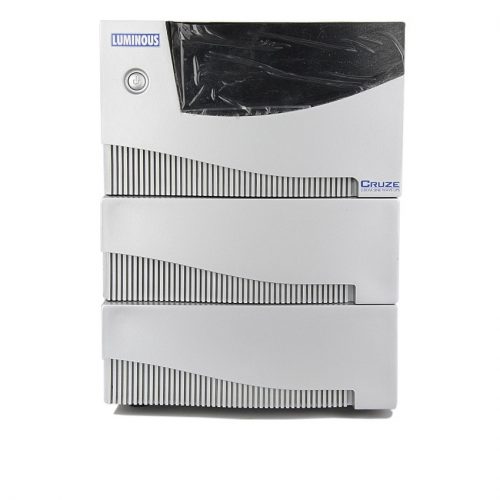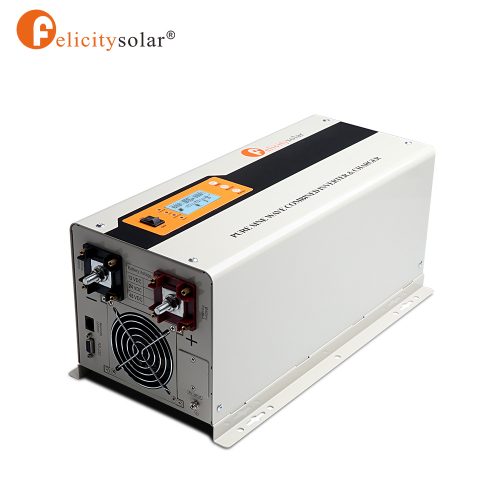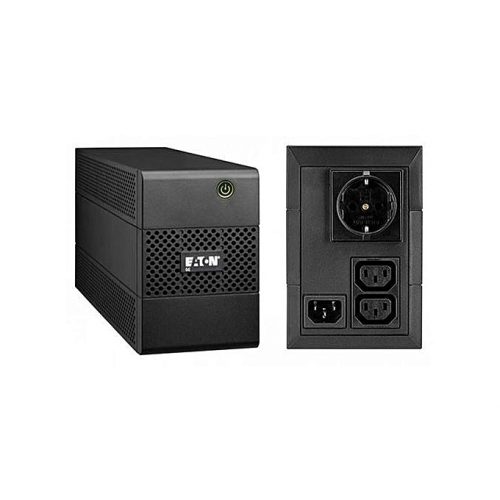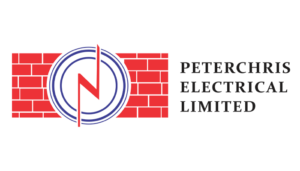2.5 KVA 24V Felicity Solar INVERTER
₦135,000
A solar inverter, or converter, or PV inverter converts the variable DC output of a photovoltaic (PV) solar panel into a utility frequency alternating current (AC) that can be an off-grid electrical network. It is a critical balance of system–components in a solar power system, allowing the use of ordinary AC-powered equipment.
Related products
-
Inverter
Luminous 3.5kVA/48V Home Inverter
0 out of 5(0)The Luminous 3.5kVA/48V Home UPS/Inverter is a high output capacity digital Luminous inverter offering robust backup performance. The Luminous 3.5kVA/48V Home UPS/Inverter will power most equipment in your home or office.
Bowealth.com.ng offers competitive luminous inverter prices than anywhere else in Nigeria. We also ensure customers enjoy full warranty support from the manufacturer. With a 3.5KVa inverter, you need four inverter batteries to work with it. Each battery is connected to each other in series (positive terminal to negative terminal) to achieve 48 volts connections
So when planning for a 3.5KVa you need to consider both prices of Luminous inverter and four batteries. If you want a lower cost, you may consider 100 AH deep cycle inverter batteries. An inverter load calculator would also help in choosing the right inverter for your home or office.
Kindly mail out team for further any inquiry or feedback
SKU: n/a -
Inverter
5KVA 48V Felicity Solar INVERTER
0 out of 5(0)A solar inverter, or converter, or PV inverter converts the variable DC output of a photovoltaic (PV) solar panel into a utility frequency alternating current (AC) that can be an off-grid electrical network. It is a critical balance of system–components in a solar power system, allowing the use of ordinary AC-powered equipment.
SKU: n/a
Recently Viewed products
5KVA 48V Felicity Solar INVERTER
A solar inverter, or converter, or PV inverter converts the variable DC output of a photovoltaic (PV) solar panel into a utility frequency alternating current (AC) that can be an off-grid electrical network. It is a critical balance of system–components in a solar power system, allowing the use of ordinary AC-powered equipment.






 Eaton 5E 1500VA USB 230V GeneralTopologyLine Interactive with Automatic Voltage RegulationConfigurationTowerStyle Number5E1500iUSBPart Number5E1500iUSBRating (VA/Watts)1500VA/900WDimensions (H x W x D, mm)330 x 180 x 133Weight (kg)10.46Warranty2 years Electrical InputConnection(1) IEC-320-C14
Eaton 5E 1500VA USB 230V GeneralTopologyLine Interactive with Automatic Voltage RegulationConfigurationTowerStyle Number5E1500iUSBPart Number5E1500iUSBRating (VA/Watts)1500VA/900WDimensions (H x W x D, mm)330 x 180 x 133Weight (kg)10.46Warranty2 years Electrical InputConnection(1) IEC-320-C14 Input Voltage Range170-280VNominal Voltage230 VOperating Frequency50/60Hz Electrical OutputNominal Voltage230VOutlets(6) IEC-320-C13
Input Voltage Range170-280VNominal Voltage230 VOperating Frequency50/60Hz Electrical OutputNominal Voltage230VOutlets(6) IEC-320-C13 BatteryBattery ManagementPermanent battery recharge, cold start CommunicationsCommunication Ports1 USB portPower Management SoftwareEaton UPS Companion software Environmental & StandardsAudible Noise
BatteryBattery ManagementPermanent battery recharge, cold start CommunicationsCommunication Ports1 USB portPower Management SoftwareEaton UPS Companion software Environmental & StandardsAudible Noise
